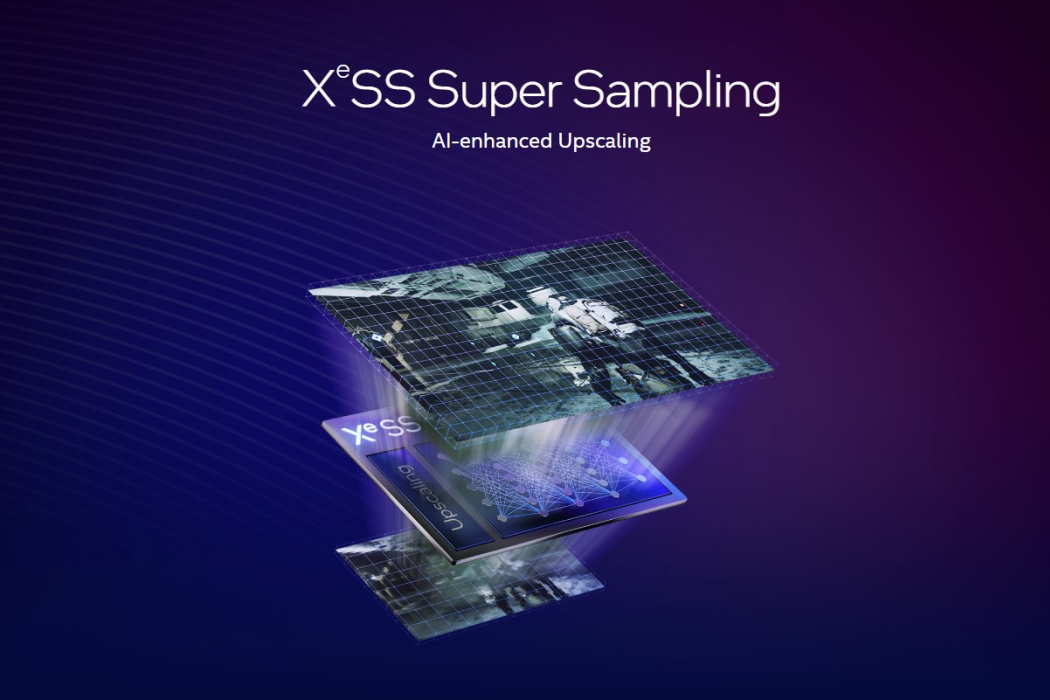Are you a gaming enthusiast looking for the ultimate visual experience? Then you’ll want to know about Intel XeSS. Whether you’re battling it out in a fast-paced shooter or exploring a vast open-world environment, XeSS ensures that every frame is optimized for maximum visual impact.
Let’s understand Intel XeSS in more detail, exploring how it works, what games it supports, its benefits, and how it compares to its rivals.
Intel XeSS: Everything You Need to Know
What is Intel XeSS?
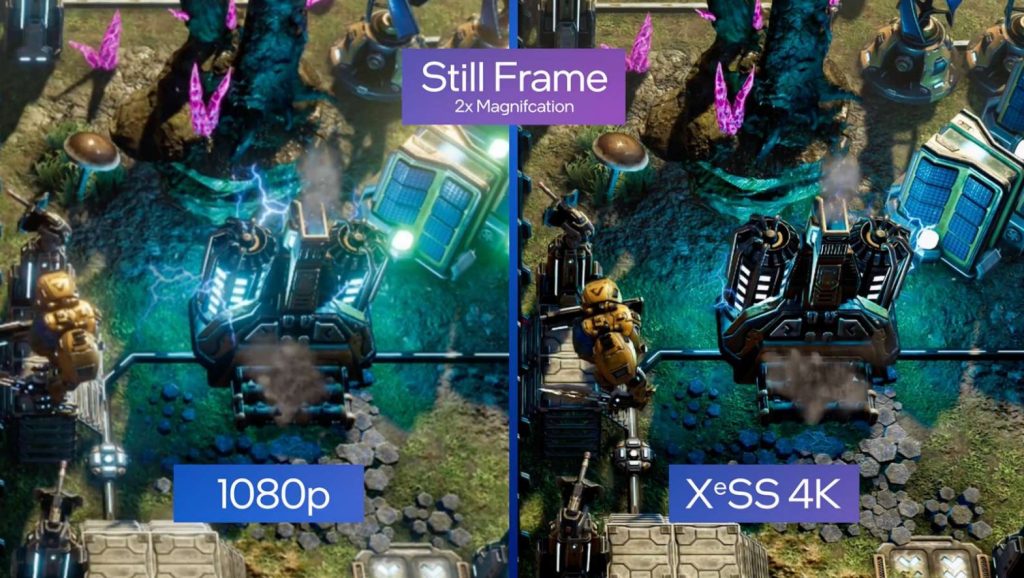
Intel XeSS (Xe Super Sampling) is an AI-based image upscaling and anti-aliasing technology developed by Intel that enhances the graphics quality of video games while maintaining high frame rates. By utilizing advanced algorithms to upscale lower-resolution images to higher resolutions, Intel XeSS provides gamers with a more immersive and visually stunning experience.
How does Intel XeSS work?
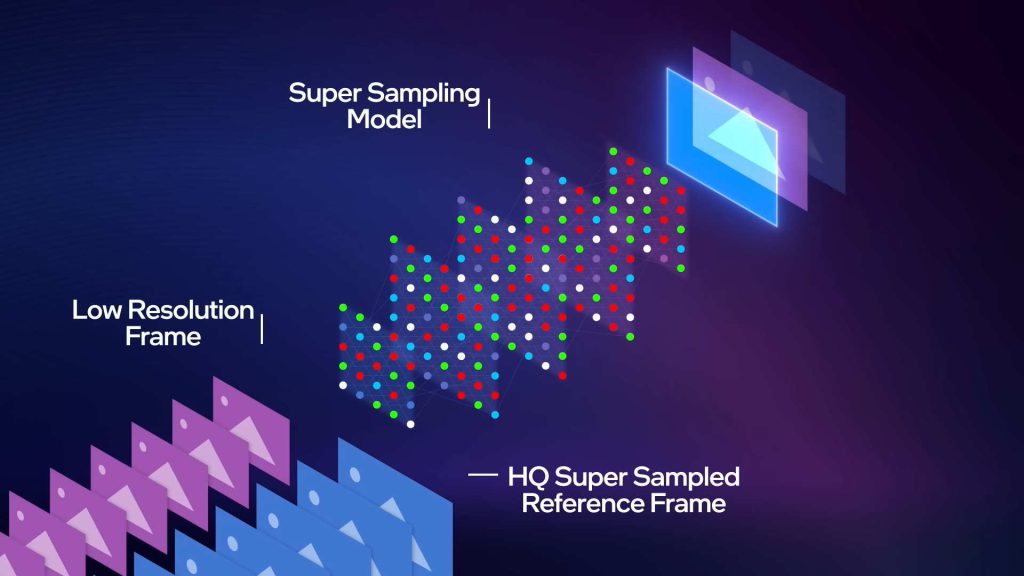
Intel XeSS works by taking lower-resolution images and using advanced algorithms to generate higher-resolution images. It achieves this by analyzing the original image and generating a higher-resolution version that retains the original image’s detail and clarity.
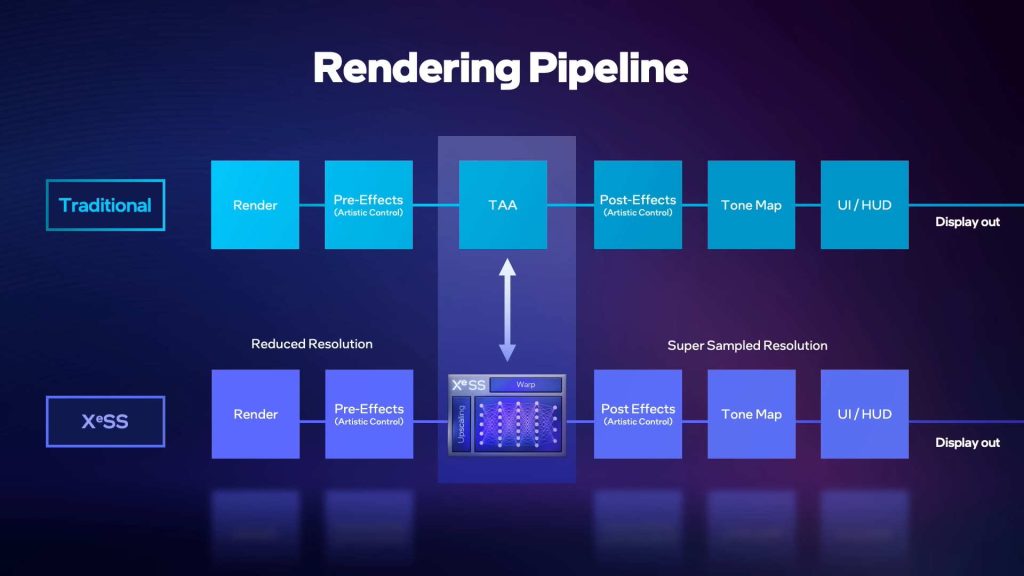
The process involves creating multiple sub-pixels, which are then used to create a more detailed and realistic final image. This results in sharper, crisper graphics that offer a more immersive and lifelike experience.
When will Intel XeSS be available?
Intel XeSS was released along with the Intel Arc Alchemist GPUs on October 12, 2022.
Is Intel XeSS similar to Nvidia DLSS?
Intel XeSS and Nvidia DLSS both use AI-based image upscaling techniques to enhance the visual quality of video games. However, there are some notable differences between the two. Firstly, XeSS is an open standard, which means that game developers can integrate it into their games more easily than DLSS, which is a proprietary technology.
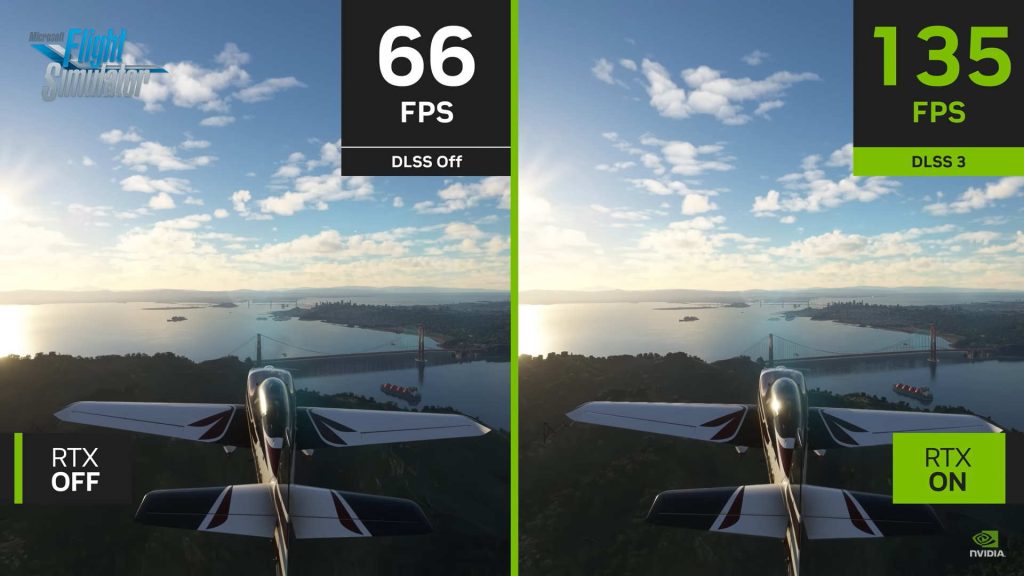
One of the significant advantages of XeSS is its wider compatibility. While DLSS only works with Nvidia RTX series GPUs, XeSS is an open-source technology that works on any GPU that supports the DP4a instruction set. This includes Nvidia GTX 10, GTX 16, RTX 20, RTX 30, and RTX 40 series GPUs, AMD RX 5000, RX 6000, and RX 7000 series GPUs, as well as Intel Arc GPUs and Intel Xe-LP integrated GPUs (11th generation mobile CPUs and newer).
The performance of XeSS upscaling is significantly better on Intel’s high-end Arc A770 and A750 GPUs, which feature XMX (Xe Matrix Extension) cores similar to Nvidia’s Tensor cores, providing more compute capability for AI-accelerated workloads.
What are the benefits of Intel XeSS?
The primary benefit of Intel XeSS is the improved graphics quality it provides without compromising on performance. Gamers can enjoy a visually stunning gaming experience without experiencing any lag or slowdowns. Additionally, Intel XeSS can help extend the life of older graphics cards by allowing them to run newer, more demanding games at higher resolutions and quality settings.
Overall, XeSS’s compatibility with a wide range of GPUs, including those from Nvidia and AMD, makes it an attractive option for game developers looking to provide improved image upscaling in their games.
Can I use Intel XeSS on non-Intel graphics cards?
Yes, Intel XeSS is an open standard and can be used on non-Intel graphics cards as long as they support the DP4a instruction set. This means that AMD and Nvidia graphics cards are compatible with XeSS. However, it’s worth noting that XeSS performance may vary on different graphics cards, and it may work better on Intel Arc GPUs due to the XMX cores found in these cards.
Which graphics cards support Intel XeSS?
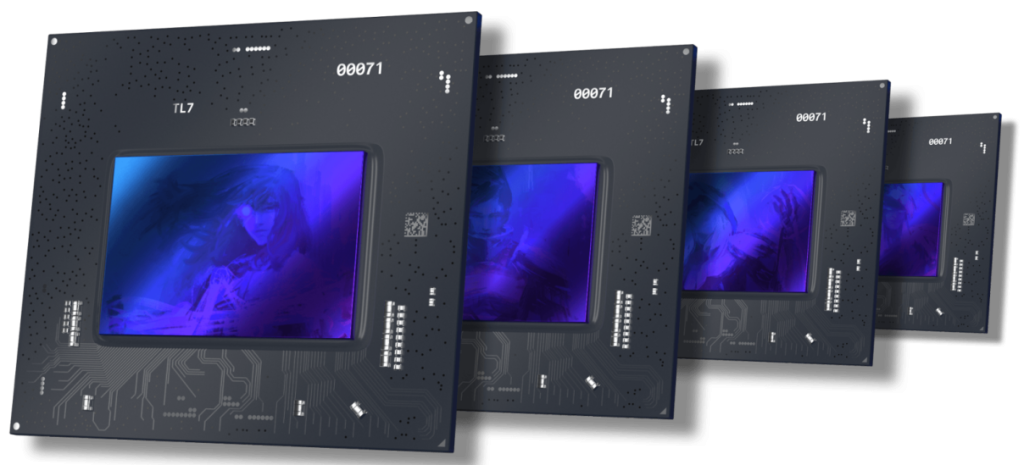
Intel XeSS offers wider compatibility and works on any GPU that supports the DP4a instruction set. This means that XeSS can work with a variety of graphics cards, including Nvidia and AMD GPUs, as well as Intel’s own integrated graphics solutions.
Nvidia GPUs that support DP4a include the GTX 10 series, GTX 16 series, RTX 20 series, RTX 30 series, and RTX 40 series. AMD GPUs that support DP4a include the RX 5000 series, RX 6000 series, and RX 7000 series. For Intel, XeSS is compatible with Intel Arc GPUs and Intel Xe-LP integrated GPUs from the 11th generation mobile CPUs and newer.
Which Games are Supported by Intel XeSS
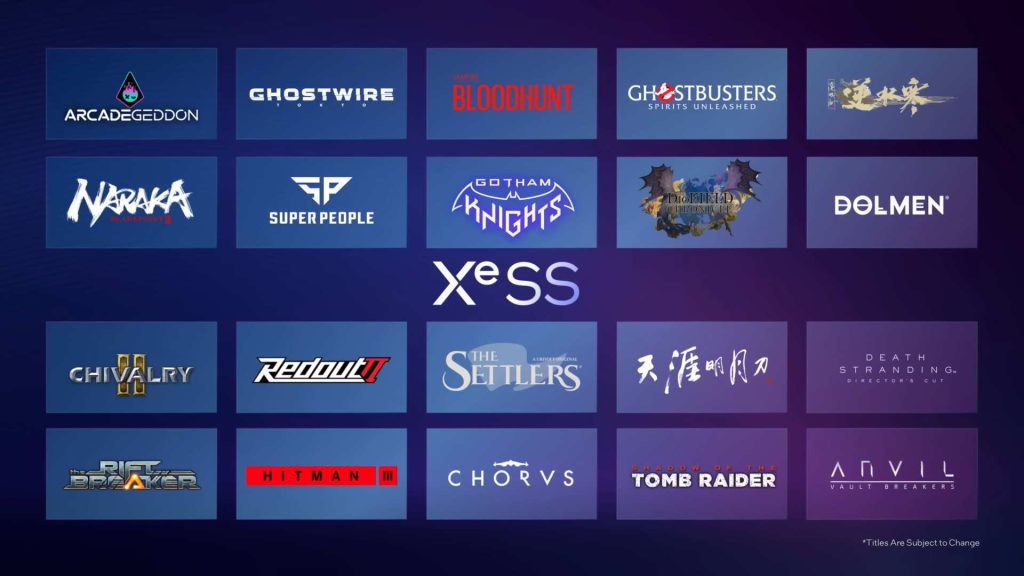
Intel XeSS is a relatively new technology, and while its list of supported games has been growing rapidly, it is still smaller than the lists of competitors such as Nvidia’s DLSS and AMD’s FSR. However, Intel has been actively working with game developers to expand the number of games that support XeSS. As of now, here’s a list of games that currently support Intel XeSS:
- Call of Duty: Modern Warfare II
- Spider-Man Remastered
- Spider-Man: Miles Morales
- Dying Light 2
- Hogwarts Legacy
- Player Unknown’s Battlegrounds
- Shadow of the Tomb Raider
- Hitman III
- Death Stranding
- Gotham Knights
- Marvel’s Avengers
- Need for Speed Unbound
- Forsaken
- Grid Legends
- Ghostbusters: Spirits Unleashed
- Farming Simulator 22
- Ghostwire: Tokyo
- Gungrave
- Dysterra
- Super People
- Nightingale
- Naraka: Bladepoint
- The DioField Chronicle
- Instinction
- GRIT
- Rift Breaker
- Armageddon
- Dolmen
- Vampire: The Masquerade – Bloodhunt
- The Settlers
- Redout II
- Chivalry II
- Chorus
- ANVIL
- Judgment
- Lost Judgment
- Deadlink
- Blacktail
- Martha is Dead
- Returnal
- Night of the Dead
- Conqueror’s Blade
- Propnight
- Scathe
- Myth of Empires
- Deceive Inc.
It’s worth noting that while XeSS is an open standard, the decision to integrate it into a game is ultimately up to the game developers. As such, it’s possible that some games may never support XeSS, while others may be added to the list in the future. If you’re interested in using XeSS, it’s a good idea to check if the game you want to play supports it before making a purchase.
How to enable and use Intel XeSS in Games
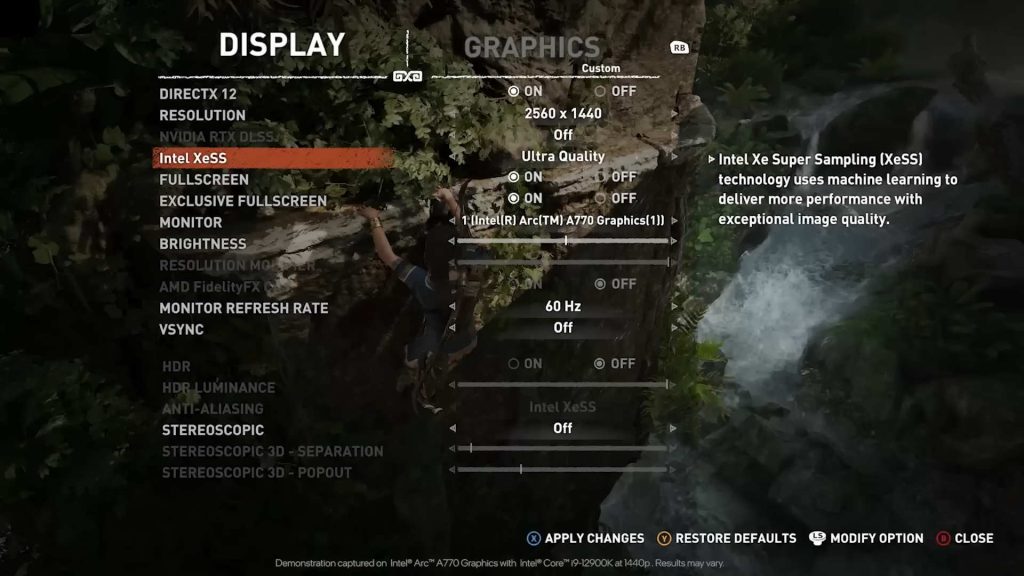
Enabling XeSS in supported games is a simple process. You can navigate to the display or graphics settings of the game and toggle the “XeSS” option to turn it on. Some games may require a confirmation prompt, where you should select “Yes.” Once enabled, you can adjust the upscaling quality to your preferences, with options including Performance, Balanced, Quality, and Ultra Quality.
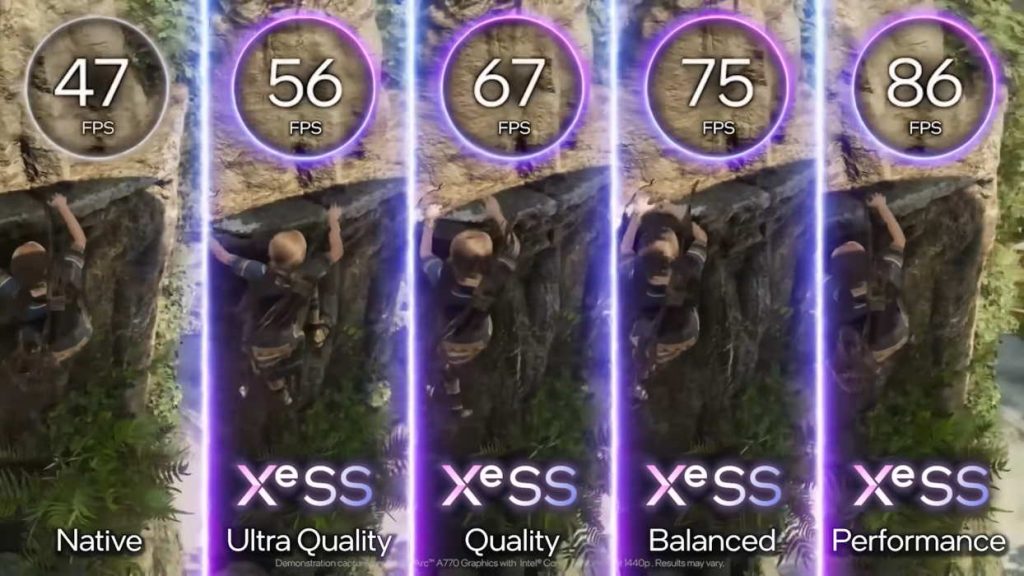
These options vary in their trade-off between image quality and performance, with Performance providing a significant increase in FPS but slightly reduced image quality, and Ultra Quality offering close to native image quality but with less drastic FPS improvement.
Intel XeSS System Requirements
The system requirements for Intel XeSS will depend on the game and the graphics card you are using. However, Intel has provided some general recommendations for using XeSS:
- Intel Arc Alchemist (Xe-HPG) graphics card or a compatible AMD or Nvidia graphics card
- Intel Core i5 or higher processor (or equivalent AMD or Nvidia processor)
- 16 GB of RAM or more
- Windows 10/11 operating system (64-bit)
- DirectX 12 API support
Keep in mind that some games may have specific requirements or limitations when it comes to using Intel XeSS. It’s always a good idea to check the game’s documentation or the Intel website for more information.
Will Intel XeSS be available on consoles?
Intel has not announced any plans to bring XeSS to consoles yet. However, given the popularity of gaming consoles and the increasing demand for high-quality visuals, it’s possible that Intel may consider bringing XeSS to consoles in the future. It’s worth noting that XeSS is an open standard, so it could potentially be used by any console manufacturer that chooses to integrate it into their hardware or software. For now, we will have to wait and see if Intel decides to bring XeSS to consoles.
How much of a performance boost can I expect from Intel XeSS?
The performance boost you can expect from Intel XeSS will depend on several factors, including the game you are playing, your graphics card, and the XeSS upscaling mode you choose. In general, Intel claims that XeSS can offer a significant boost to performance while maintaining image quality.
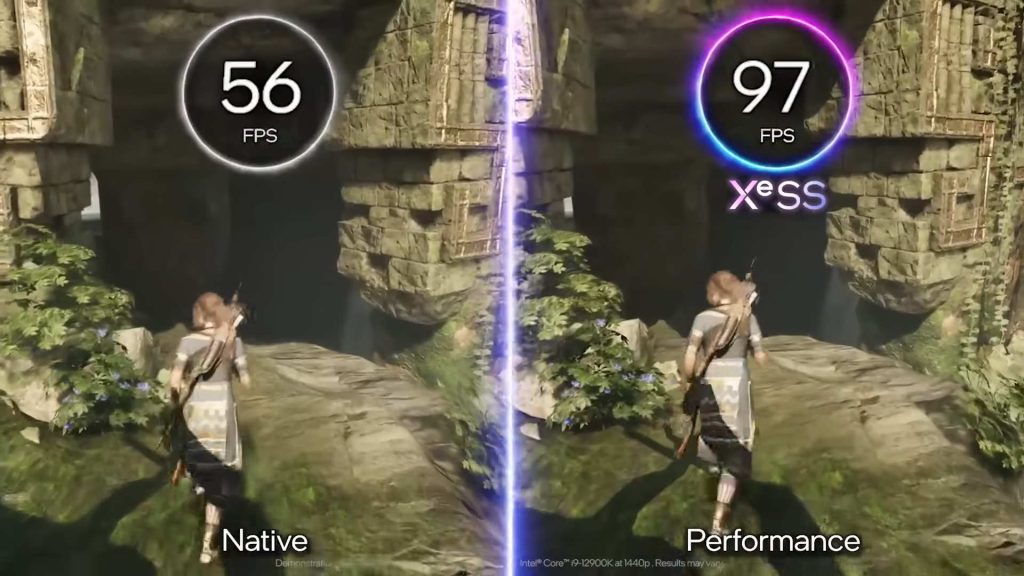
When comparing XeSS to Nvidia DLSS, it’s important to note that DLSS still outperforms XeSS in terms of raw performance. However, XeSS may offer a viable alternative for gamers using non-Nvidia graphics cards that do not support DLSS.
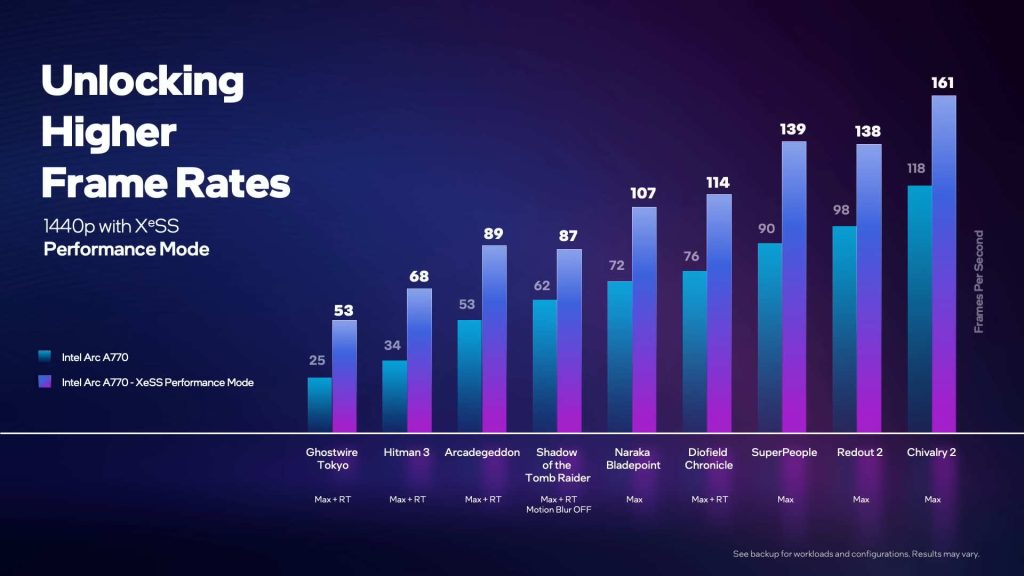
Ultimately, the performance boost you can expect from XeSS will depend on your specific hardware and the game you are playing. It’s always best to test XeSS for yourself to see how much of a difference it makes in your particular situation.
Are there any downsides to using Intel XeSS?
While Intel XeSS can provide a significant boost in performance, there are a few downsides to using it. Firstly, XeSS may not work well with all games, and its performance gains can vary depending on the game and your hardware configuration.
Secondly, enabling XeSS can result in some image degradation, especially in Performance and Balanced modes, where the upscaling quality is lower. This may not be noticeable in some games or on lower resolution displays, but it could be a concern for gamers who prioritize visual quality.
Finally, enabling XeSS can result in increased power consumption and heat generation, which could be an issue for users with lower-end or older hardware, or for those who use their systems for extended gaming sessions.
Overall, while the benefits of XeSS can be significant, users should weigh these potential downsides before enabling it in their games.
Final thought
Although similar to Nvidia’s DLSS, XeSS can run on both XMX cores and general hardware that supports DP4a instruction, making it more versatile.
In terms of performance, Nvidia DLSS still provides better performance overall, and Intel XeSS is not yet available on as many games as DLSS.
If you have an Intel Arc A770 or A750 GPU, then you should give XeSS a try, as it can provide extra frames without sacrificing quality. If you have another graphics card, you may want to try out different upscaling technologies such as DLSS or FSR and compare their results to see which one works best for you.
Intel XeSS is expected to expand to more games in the future, and we can expect to see further improvements and optimizations as the technology matures.

